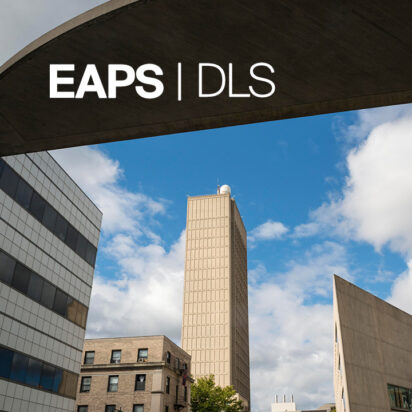
[DLS] Lars Hansen (University of Minnesota)
Date: Tuesday, December 3, 2024 Time: 12:30 - 1:30pm Location: 55-110 | MIT Campus, Cambridge, MA“Dislocations and Dilation: How Microscopic Crystal Defects Control the Dynamics of the Solid Earth”
The mechanical properties of rocks control a range of large-scale, geodynamic processes over a broad set of timescales. Examples include flexure of the lithosphere at subduction zones, fault stability and the depth at which earthquakes nucleate, surface uplift after mass loss from ice sheets, the attenuation of teleseismic waves, and melt migration in and extraction from volcanic systems. Those mechanical properties intimately depend on the dynamics of microscopic defects within the crystals that make up those rocks. Here I focus on two types of defects, dislocations and surfaces (i.e., cracks or pores), and present ongoing development of a constitutive model for the mechanical properties of rocks based on the dynamics of those defects. I will present recent data from laboratory experiments conducted with either a gas-medium Paterson apparatus or a solid-medium Deformation-DIA to calibrate this model specifically for upper-mantle rocks. These experiments reveal that dislocation interactions in crystals leads to viscoelastic behavior that sets the behavior of the upper mantle over short, intermediate, and long timescales. In addition, dislocation interactions can lead to crack nucleation that may lead to weaker lithospheric strength than previously predicted. In some highly porous rocks, the dislocation dynamics at grain contacts still controls the macroscopic strength. However, at sufficiently high temperatures, low grain sizes, and high porosities, the rocks begin to behave as a granular medium, in which the dilatancy (i.e, increase of porosity or crack density) becomse the strength-controlling factor. The resulting calibration provides insight into observations of apparently weak lithospheric flexure, rapid uplift after ice loss near the coast of Antarctica, seismic attenuation in regions of past deformation, and rapid magma migration prior to volcanic eruptions.
EAPS Department Lecture Series —
Weekly talks aimed to bring together the entire EAPS community, given by leading thinkers in the areas of geology, geophysics, geobiology, geochemistry, atmospheric science, oceanography, climatology, and planetary science. Runs concurrently with class 12.S501.
Contact: eapsinfo@mit.edu
